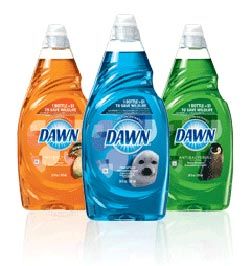togwt
The Old Grey Whistle Test

Washing-up Liquids (Detergent)
The use of this type of dish washing detergent has been debated for years among car detailing enthusiasts. Problems arise when people use dish washing liquid as their normal car wash soap. From a chemical standpoint using dishwashing detergents to clean a porous, sensitive clear coat paint surface is very poor choice. Dish washing detergents usually contain a sheeting agent (Alcohol alkoxylate or sodium) or other additive to avoid water spotting; along with emollients or moisturizers; these work by forming a thin protective coating on the surface of the skin to prevent any loss of moisture, this will leave a film on the paint surface. Dawn specifically uses Ethyl Alcohol (Ethanol) as its main cleaning agent
This is in no way a criticism in any way, as most of you do not have chemical backgrounds and have no other way of knowing besides what a marketing team tells you or what manufacturers put on their labels. I'm trying not to turn this into a chemistry lesson; just providing enough chemical information for you to make an informed decision
Notable brands of dishwashing liquid include Procter & Gamble’s Dawn®, which is the leading brand in the United States, and Fairy Liquid, which is the bestselling brand in the United Kingdom and similar type dish washing liquids chemistry relies primarily on detergent and surfactant technology. This type of chemistry has advanced to the point that it can be engineered to specific soils (i.e. organic grease)
Detergent and soap chemistry and product formulation is a lot more complicated than this, suffice it to say; modern car wash formulations are automotive soil specific. Almost every manufacturer of detergents uses salt as an ingredient, it increases viscosity making it easier to work with, and it also acts as filler, which lowers first costs. Car wash concentrates don’t formulate their products with salt as it drastically increases corrosion rates
As a means of paint surface preparation and the removal of wax / polymer sealants it’s not very effective as paint protection products are usually formulated to be detergent resistant. It was initially used by body shop detailer’s to remove traces of the oils from waxes commonly used on Nitrocellulose Lacquer paints, this is probably the reason some long established painters recommend its use a paint preparation product prior to using their sealants.
Advanced auto wash concentrates and paint cleaners are available and are better suited to cleaning paint surfaces. Modern clear coat is porous so I would not recommend using a harsh dishwashing detergent such as Dawn® on a regular basis, as they contain both sodium and a degreaser, although most of them are approx pH 8.0 (although pH is not the only thing to consider when evaluating products) the MSDS will provide other relevant information.
The MSDS indicates that this product contains Sodium laureth sulphate a foaming agent, Dodecylbenzene sulphonic acid and sodium hydroxide; these salt crystals could be mildly abrasive when they 'come out' of the compound later and will then permeate the pant surface.
Almost every manufacturer of detergents uses sodium as an ingredient, it increases viscosity making it easier to work with, and it also acts as filler, which lowers first costs; the amount used and the dilution ratio (1oz per gallon) 1:128 would render these chemicals (sodium) mostly harmless.
Dish washing detergents usually contain a sheeting agent (Alcohol alkoxylate or sodium) or other additive to avoid water spotting; along with emollients or moisturizers; these work by forming a thin protective coating on the surface of the dishes or glassware and also to protect the skin to prevent any loss of moisture. However emollients make the paint surface more difficult to dry and leave an oily residue on the paint surface, which may negatively affect .product cross-linking / bonding and will also negatively affect the surface reflectivity (Gloss) Dawn specifically uses Ethyl Alcohol (Ethanol) as its main cleaning agent
Emollients have three basic properties:
Occlusion - providing a layer of oil on the surface of the skin to slow water loss and thus increase the moisture content
Humectant - increasing the water-holding capacity of the stratum
Lubrication - adding a slip or glide across the skin.
To remove any reside re-wash the surfaces with a d-limonene based solvent cleaner (P21S Total Auto Wash or Chemical Guys Citrus Wash) this will also remove the emollients (film) left by dish-washing detergents
Generally you should avoid the use of household cleaning products for automotive detailing as they are formulated for an entirely different type of cleaning
.
[Your car surface and the dirt that gets on it are a lot different from the food soils and dishes that dishwashing liquids clean effectively. We don't recommend them for cleaning your car] Proctor and Gamble
See also FAQ Proctor and Gamble website - FAQ
